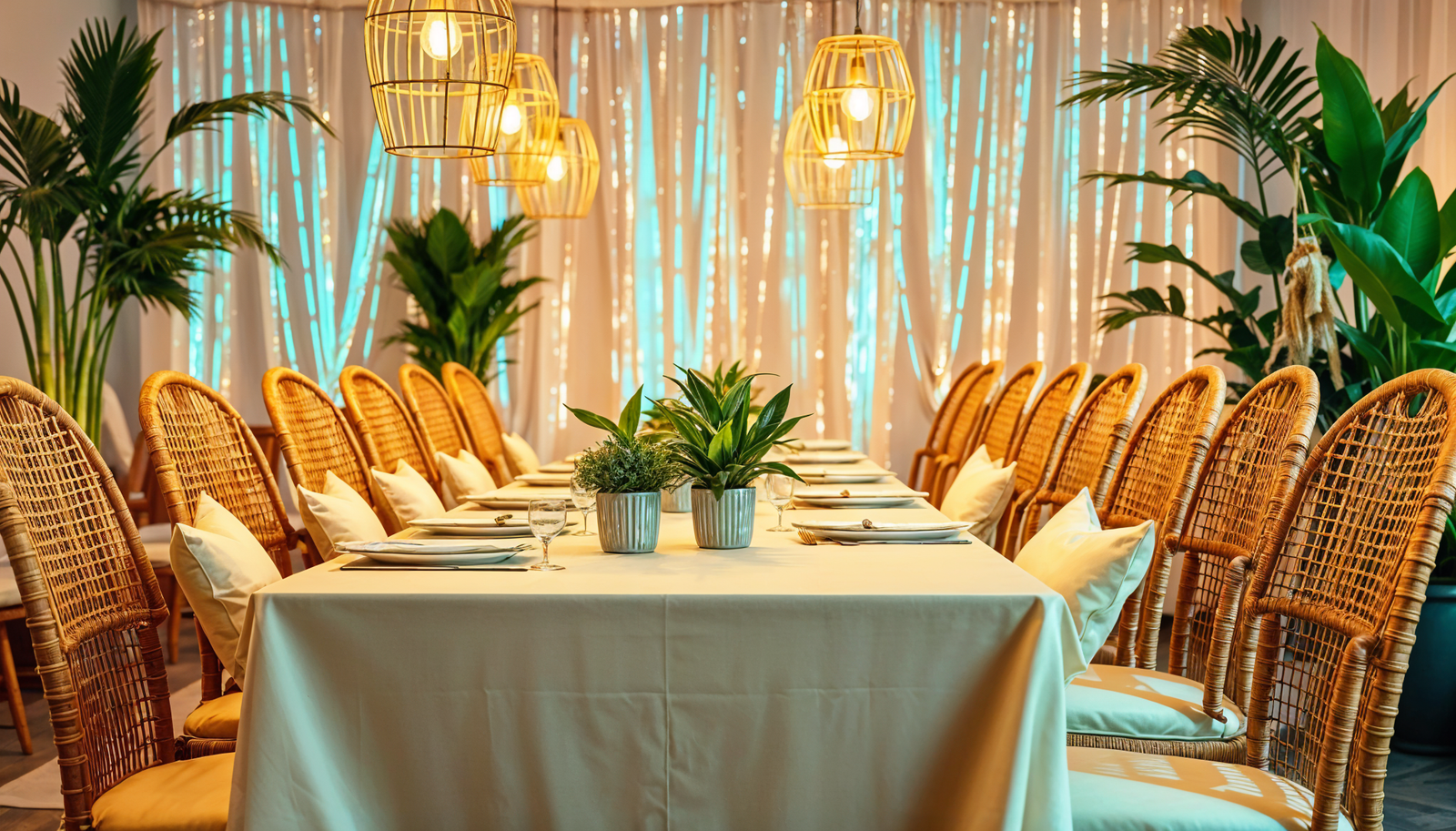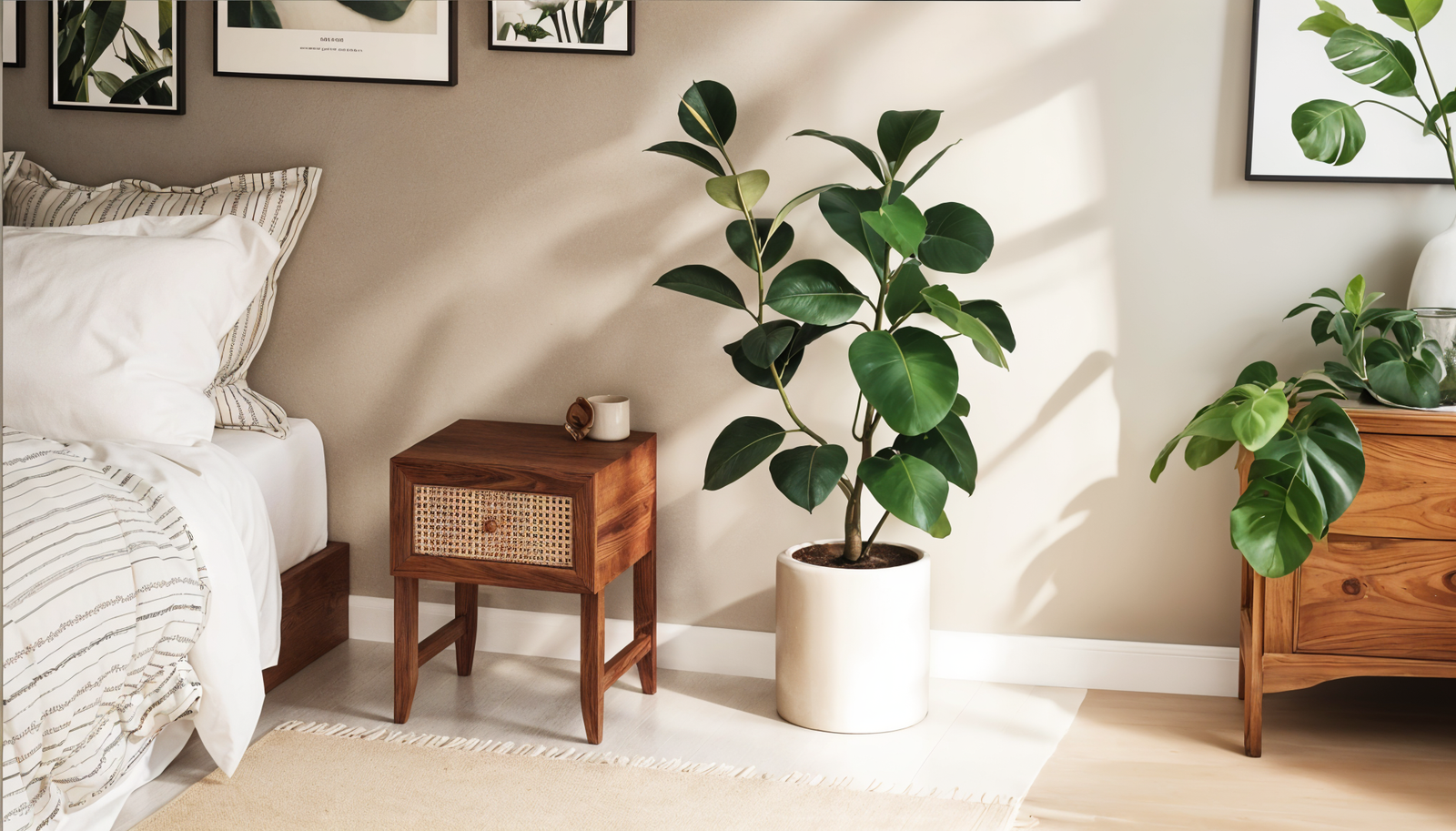🤍 Unmatched Quality, Authentic Craftsmanship
🤍 Unmatched Quality, Authentic Craftsmanship
🤍 Unmatched Quality, Authentic Craftsmanship
In the world of interior design, the Japandi style has been gaining popularity for its unique blend of Japanese minimalism and Scandinavian functionality.
Characterized by clean lines, natural materials, and a serene aesthetic, Japandi design is known for its use of wood.
In this guide, we will explore the types of wood commonly used in Japandi furniture, helping you understand the key wood choices and their role in creating the minimalist yet warm ambiance that Japandi style is renowned for.
Our team at Mojo Boutique has curated this comprehensive guide to provide you with insights into the world of Japandi furniture.
Let's delve into the fascinating world of Japandi wood, exploring the common woods used, popular wood choices, and essential considerations for creating the perfect Japandi space.

Japandi is a fusion of Japanese minimalism and Scandinavian functionality.
This design style emphasizes simplicity, functionality, and a deep connection with nature.
Japandi furniture materials play a crucial role in creating this aesthetic.
By combining clean lines, natural materials, and minimalist furniture, Japandi design creates a serene and harmonious living space.
Nature plays a significant role in the selection of wood for Japandi furniture.
The fusion of Japanese traditions and Scandinavian functionalism in Japandi design creates a strong connection to the natural world.
Let's explore how nature influences the choice of wood in Japandi furniture, drawing inspiration from both Japanese wood traditions and Scandinavian functionalism.
Japanese wood traditions have a deep-rooted influence on Japandi design.
Certain japandi furniture wood types, such as cedar, red pine, and cypress, hold cultural significance and are highly valued for their durability and resistance to decay.
These woods are carefully selected to create furniture that embodies the warmth and timelessness of traditional Japanese craftsmanship.
Scandinavian functionalism, with its focus on simplicity and functionality, also guides the selection of wood in Japandi furniture.
Oak, pine, mahogany, and teak are highly regarded in Scandinavian furniture design.
These woods are known for their durability, strength, and natural beauty, making them ideal choices for creating functional yet aesthetically pleasing Japandi furniture pieces.

Japandi furniture incorporates a variety of wood types to create its unique aesthetic.
Common woods for japandi furniture include cedar, cypress, oak, pine, mahogany, and teak.
Each type of wood has its own characteristics, colors, and textures, contributing to the overall look and feel of Japandi furniture.
By carefully selecting and combining these different wood species, Japandi furniture designers achieve a harmonious balance between the simplicity of Japanese aesthetics and the functionality of Scandinavian design.
The use of natural materials, such as these varied wood types, enhances the connection to nature and creates a serene and inviting atmosphere in Japandi interiors.
One of the key elements of Japandi design is the art of blending dark and light wood tones.
This contrast creates a balanced visual harmony and adds depth to the furniture.
In Japandi furniture, the combination of different wood tones is strategically utilized to create a cohesive and visually appealing look.
Blending dark and light wood tones is essential to achieving a balanced visual harmony in Japandi design.
This technique creates a sense of harmony and balance in the space, enhancing its overall aesthetic appeal.
By combining contrasting wood tones, Japandi furniture achieves a harmonious balance between warmth and minimalism.
There are various strategies for integrating contrasting wood tones in Japandi design.
One approach is to use light-tone wood for flooring and dark-tone wood for furniture, or vice versa.
This juxtaposition of different wood tones creates a dynamic contrast that adds visual interest to the space.
Another strategy is to incorporate wood with natural color variations, such as oak or teak, which naturally blend dark and light tones within the same piece of furniture.
A visually appealing example of this blending of dark and light wood tones can be seen in the image below:

Certain wood types stand out in Japandi furnishings and accessories.
Understanding the characteristics of each wood type helps in selecting the right pieces for a Japandi interior.
Cedar, cypress, and red pine are highly praised for their beauty and cultural significance in Japanese design.
These wood types bring warmth and elegance to Japandi furniture.
Cedar, known for its rich colors and natural aroma, adds a sense of tranquility to the space.
Cypress features a stunning grain pattern and offers natural resistance to decay and insect infestations.
Red pine, with its reddish-brown hues, brings a touch of rustic charm to Japandi interiors.

Oak, mahogany, and teak are renowned for their durability and strength, making them ideal choices for Japandi furniture.
Oak, with its distinct grain patterns and neutral tones, adds a timeless appeal to Japandi interiors.
Mahogany, known for its deep, rich colors, lends an air of sophistication and luxury.
Teak, recognized for its natural oils and resistance to moisture, is a popular choice for outdoor Japandi furniture.
| Wood Type | Characteristics |
|---|---|
| Cedar | Rich colors, natural aroma, and a sense of tranquility |
| Cypress | Stunning grain pattern, natural resistance to decay and insects |
| Red Pine | Reddish-brown hues and rustic charm |
| Oak | Distinct grain patterns, neutral tones, and timeless appeal |
| Mahogany | Deep, rich colors for a sophisticated and luxurious look |
| Teak | Natural oils and moisture resistance, suitable for outdoor furniture |
Wood plays a pivotal role in crafting Japandi interiors. It is used extensively in furniture, flooring, and accents.
The use of natural materials, particularly wood, enhances the connection to nature and creates a warm and inviting atmosphere in Japandi spaces.
Wood contributes to the overall aesthetic and functionality of Japandi interiors.
When it comes to creating Japandi interiors, wood is the key element that brings the essence of nature indoors.
The warmth and texture of wood add a sense of organic beauty to the space, creating a peaceful and harmonious environment.
In Japandi design, wood is used in various ways. It is commonly found in furniture such as dining tables, chairs, and bed frames.
The natural grains and textures of wood enhance the minimalist aesthetic, creating a visually pleasing and calming effect.

In addition to furniture, wood is also used in flooring, wall panels, and decorative accents.
This use of wood throughout the space creates a cohesive and harmonious design, connecting different elements and tying the entire interior together.
The importance of wood in Japandi design goes beyond its aesthetic appeal.
Wood is known for its durability, longevity, and sustainability. It is a natural material that ages beautifully over time, adding character and charm to the interior.
By incorporating wood into Japandi interiors, designers and homeowners embrace the simplicity and elegance of nature.
The natural warmth and beauty of wood create a soothing and inviting atmosphere, making the space feel like a retreat from the outside world.
In order to maintain the natural beauty of wood in Japandi furniture, we prefer to use minimalistic finishes.
These finishes allow the wood's natural grain and texture to shine through, enhancing the organic feel of the furniture.
By opting for minimalistic wood finishes, we strive to create a harmonious balance between the simplicity of Japandi design and the intrinsic beauty of the wood itself.

In Japandi design, the focus is on creating a serene and minimalist aesthetic.
With minimalistic wood finishes, we aim to highlight the unique characteristics of each wood type while preserving its natural beauty.
By allowing the wood's natural grain and texture to be the star of the show, we achieve a clean and uncluttered look that perfectly embodies the essence of Japandi design.
At Mojo Boutique, we recognize the significance of sustainability in today's world.
That's why we emphasize the importance of using sustainably sourced wood options in Japandi furniture.
By opting for woods that are responsibly harvested, we not only contribute to the preservation of our environment but also align with the eco-conscious nature of the Japandi design style.
With sustainably sourced wood options, we can create beautiful and functional furniture that has a positive impact on both our living spaces and the planet.
Now that you have read the above article, maybe you still have a couple of questions on this topic, so we will answer these questions below.
Japandi furniture incorporates a variety of wood types, including cedar, cypress, oak, pine, mahogany, and teak.
Blending dark and light wood tones in Japandi design creates a balanced visual harmony.
Strategies include using light-tone wood for flooring and dark-tone wood for furniture.
Cedar, cypress, and red pine are highly praised for their beauty and cultural significance.
Oak, mahogany, and teak are chosen for their durability and strength.
In this comprehensive guide to Japandi furniture, we have explored the various wood types commonly used in Japandi design.
By understanding the significance of these popular wood choices for japandi furniture, we can appreciate the serene and minimalist aesthetic that defines the Japandi style.
The influence of nature on Japandi wood selection is evident through the use of cedar, cypress, and red pine, reflecting Japanese traditions and their resistance to decay.
Additionally, Scandinavian functionalism brings oak, pine, mahogany, and teak into the mix, known for their durability and strength in Scandinavian furniture design.
The art of blending dark and light wood tones is a key aspect of Japandi design, creating a balanced visual harmony and adding depth to the furniture.
By integrating contrasting wood tones, such as using light-tone wood for flooring and dark-tone wood for furniture, a cohesive and visually appealing Japandi space can be achieved.
Wood plays a pivotal role in crafting Japandi interiors, as it is extensively used in furniture, flooring, and accents.
The use of natural materials, particularly wood, enhances the connection to nature and creates a warm and inviting atmosphere in Japandi spaces.
Minimalistic wood finishes and the consideration of sustainably sourced wood options further align with the eco-conscious nature of Japandi design.
In conclusion, understanding the wood choices in Japandi furniture allows us to appreciate the careful balance between Japanese minimalism and Scandinavian functionality.
By selecting the right wood types, blending contrasting tones, and incorporating sustainably sourced options, we can truly embrace the essence of Japandi design.


